The Tail Concerto franchise is the most niche of the niche games.
Cyberconnect (best known for its high-octane anime tie-in games) returns to this setting every so often. The first two games, Tale Concerto and Solatorobo: Red the Hunter, were obscure titles, but the latest entry, Fuga: Melodies of Steel became its first game to break out. Perhaps unsurprisingly, it's also the first entry to get a direct sequel. Fuga: Melodies of Steel 2 is about as straightforward of a sequel as you can get. Fortunately, it's a straightforward sequel to an excellent game and manages to capture the magic all over again, if not quite as brilliantly as the first game.
Fuga 2 is set about a year after the true ending of the original game. The land of Gasco has been shattered into a series of floating islands connected by airship travel, but otherwise, things have become peaceful. The children who previously saved the land have returned to their peaceful lives. However, a request from the Gasco army brings the young farmer Malt and his friends to Gasco's new capital city. It turns out the giant tank they used, The Taranis, has repaired itself and refuses to allow entry to anyone except the kids. The same goes for its rival, the dangerous Tarascus. While some of the kids explore the Taranis, it reactivates and starts going on a rampage, seemingly hypnotizing the unfortunate crew members inside. Malt and the remaining members of the Taranis' original crew take the Tarascus to hunt down their old ally and save their friends before the tank destroys the land.
Fuga 2's plot is fun, but it feels a touch too much like a retread of the first game. It's thin on new characters, and many of the plot events feel very similar. It's fun to see the characters again and observe how they've changed since the first game, but so much of the experience is spent chasing one specific enemy and fighting AI drones that the team has less of an impact than in the first game. It's also annoying that the true ending is almost instantly undone by the post-ending epilogue, which mostly sets up Fuga 3. I still had fun, but I almost found myself wishing they'd move on to Fuga 3's plot instead.
The basic gameplay of Fuga 2 is almost identical to the first game. Each level is divided into Slay the Spire-style maps, and players select different routes to explore. Each stop on a map is either a battle, some items, healing, an event, or ruins to explore. Your goal is to choose the best routes for your current team status. Dangerous routes offer more rewards but tougher enemies, so you risk getting worn down by the time you reach an unavoidable and dangerous foe.
There are a few new nodes in Fuga 2. Probably the most notable are Airship nodes, which allow you to spend money earned from battles for a variety of items or bonuses. Airships house mid-level shops where you can replenish items and resources. More importantly, they can also be used for air raids, supply drops and transportation. Air raids allow you to spend money to destroy upcoming enemy battles so you can make difficult routes easier or minimize the amount of necessary combat. You even still get Exp for it! Supply drops let you spend money to give health or SP-restoring nodes along your path. Transportation lets you use the airship to travel to a different route or return to a previous route and take a different direction.
Airships are a neat addition that provide interesting choices. Transportation is the real standout, as the variety of options fit very well with the game's risk/reward design. Players can decide to take on all of the routes for additional rewards or spend resources to eliminate a potentially dangerous challenge. Likewise, players can spend money to obliterate dangerous foes, but I preferred the fights because they yield greater rewards.
The combat system is also almost identical to the first game. It's a turn-based RPG combat system where your entire team is in control of one giant tank. There are three positions on the tank, each of which can be occupied by two characters. The front character determines the weapons and skills, while the back character gives passive buffs depending on their friendship with the front character. You can swap characters at any time, but there's a three-turn cooldown before you can do it again. The HP and SP of the group are all shared, which means that you're effectively playing as one character who gets three turns. Attacks can be divided into cannon attacks, grenade launcher or machine gun, depending on the character. Machine guns are weak but highly accurate and often skilled at stripping armor, while cannons do huge damage but can't really hit fast or airborne enemies. If you've played the first game, it's going to feel very familiar, and if you haven't, it's probably best to start there first.
Perhaps the biggest change to the core combat is a ton of different balance changes. There are fewer overlapping skills than in the previous game; each character pretty much has their own distinct move set, aside from a couple of utility moves. Kyle is the best at fighting air enemies, and Jin is the best at fighting ground foes. Socks piles on status effects, and Boron is great at area attacks, while new character Vanilla is an absolute beast at single-target damage. You're rewarded for frequently swapping characters more so than in the first game, especially with new passives that reward not keeping the same two characters together all the time. Likewise, certain overpowered characters have been given significant nerfs. For example, Hack is now a machine gunner instead of a cannoneer, and while he's still extremely useful, he's no longer the undisputed master of damage that he used to be.
Also getting a full rework is the Soul Cannon. In the original game, the Soul Cannon was a special weapon to instantly win a fight — at the cost of one of your characters. Since the best ending required losing nobody and the idea of shoving a nine-year-old into a death gun was unsettling, it basically went unused. Fuga 2 tries to fix this by splitting the mechanic into two separate parts: Managarm and the Soul Cannon.
Managarm takes over the Soul Cannon's old role. It is a special attack that can be used once per battle and effectively obliterates anything in its path. Like the old cannon, it requires a sacrifice, but the sacrifice here isn't killed — just merely knocked out until the next intermission. You also lose any experience you would've earned for the fight, effectively sacrificing rewards and a character to avoid a battle. I don't think I touched Managarm once. Sacrificing rewards is rarely worth it, since the game's toughest battles are optional.
Managarm's true purpose comes into play with the new Soul Cannon. Unlike the original game, you can't use the cannon freely. The tank's built-in AI is designed to automatically activate when it detects potentially lethal damage. Once it does, the AI selects a child at random and teleports them into the cannon. From there, you have a time limit (around 20 turns) to win the fight, or the weapon automatically fires and kills its unlucky ammunition. You can fire the Managarm to prevent this, but by doing so, you're sacrificing any rewards from the fight.
The mechanic is an improvement over the original Soul Cannon. As before, you don't want to touch these weapons if you can avoid them, but the addition of an uncaring AI that forces the sacrifice on you adds an enjoyable amount of pressure to the gameplay. If you take too many risks or make too many mistakes, you'll find yourself scrambling. The game also rewards you more for keeping yourself safe and in high health, since trying too hard to skirt the line can put you at risk of the Soul Cannon.
Less promising is the new Empathy and Resolution mechanic. Since the game focuses on Malt in a leadership role, his decisions hold a greater influence. Most of the dialogue choices are divided into either empathy (caring) or resolution (focus on a mission). This feels like a pretty standard morality system. You choose blue for nice choices or red for stern choices, with either one fills up a meter. At a certain threshold, Malt unlocks new leadership skills that are randomly activated abilities during battle.
For example, the first empathy skill curses the enemy's next attack, causing it to always miss. These skills only activate at random, so they're a nice bonus but not dependable at all. Since the thresholds to unlock them are so high, you're basically going to choose empathy or resolution at the start of the game and never pick anything else. Similarly, there are plot shifts, but as far as I can tell, it's still a straight red or blue dichotomy. It doesn't ruin the game by any means, but I wish there were more of a gray area, especially since, as far as I can tell, there isn't a huge plot difference between the two.
Like the rest of the game, the visuals haven't changed much. The bright and colorful artwork still looks fantastic, and the redesigns of the enemy units are creepy. Most enemies have a disturbing biomechanical design that makes them look less like standard tanks and more like unnatural creatures. Each character has been redesigned, and there are more colorful animations and movement in the intermission segments. The voice acting is still Japanese or French only, but the title does a good job with it. Malt's voice actor gets a lot of chances to howl and scream, and he does it extremely well. The music is also good, but it's largely recycled from the first game.
Fuga: Melodies of Steel 2 is a very safe sequel. It's the same characters, same gameplay, and a very similar plot, but with some additions and new mechanics and general upgrades. The result is an experience that feels familiar but has enough adjustments and changes to feel fresh. The excellent combat system is as good as ever. I can't help but hope that the next game shows a little more ambition, but at the same time, I'd happily play another entry. Sometimes, it's OK to stick to what works, and Fuga 2 shows that this particular franchise has a lot of life left in it.
Score: 8.5/10
More articles about Fuga: Melodies Of Steel 2


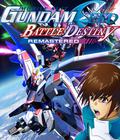
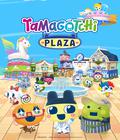
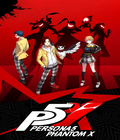
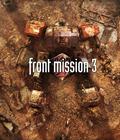

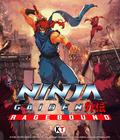

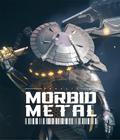

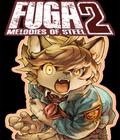 Fuga: Melodies of Steel 2 is a turn-based/tactical RPG with a ramped up battle system for more strategy, as well as a brand new event system that gives you more thrilling choices to affect your experience!
Fuga: Melodies of Steel 2 is a turn-based/tactical RPG with a ramped up battle system for more strategy, as well as a brand new event system that gives you more thrilling choices to affect your experience!















































